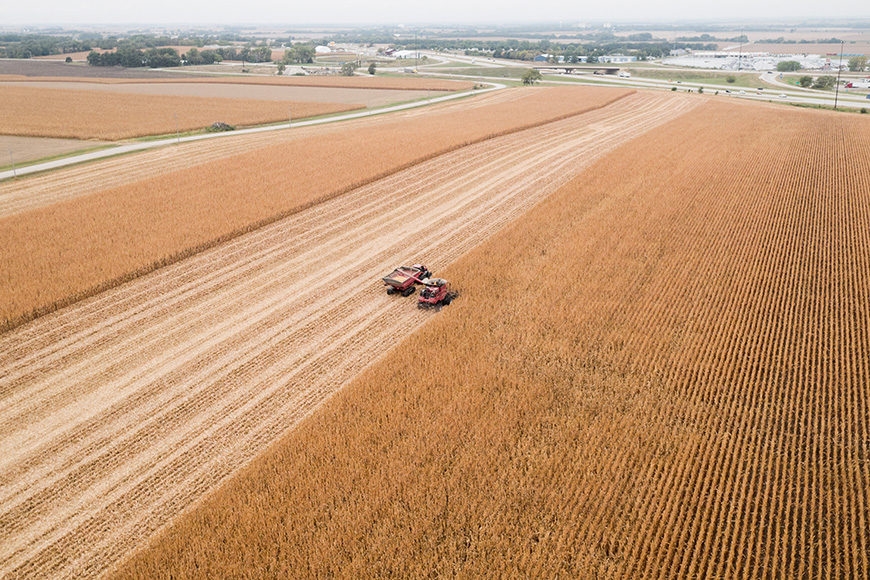Le Sueur County, Minnesota Elite Rx® Field Trial

June 2, 2020 - Top-Dress Update
As a part of Advanced Acre Rx the grower receives a customized fertility plan based on soil samples, yield history maps, and hybrid performance from Answer Plot data. These plans are designed to exceed the yield goal set forth by the grower and the AARx plan, in this case 105% of the grower’s 2020 APH.When building the fertility plans we rely heavily on technologies that drive efficient use and stewardship of nutrients, such as Nitrogen Stabilizers, Variable Rate prescriptions for Phosphorous and Potassium, and multiple applications of Nitrogen based on crop modeling on Field Forecasting Tool.
Below is the grower’s fertility program
- This plan is based on soil test, field history, hybrid selection and preferred guidelines.
- Macronutrient & Micronutrient applications
- Nitrogen:
- 150# Pre Plant (As Stabilized Urea)
- 35# At Planting (As 32%)
- 70# Side Dress (As Urea & AMS)
- Phosphorous: 17# At Plant (As 10-34-0)
- Potassium:
- 110# Pre Plant (As Potash & MESZ) Variable Rate
- 80# Side Dress (As Potash)

June 2, 2020 - MZB Soil Sampling
As part of Advanced Acre Rx all fields receive a MZB Lite map of their farm, which is a multi-layer map created by using RTK-measured elevation and GNDVI Crop Vigor measurement. These field maps create 5 unique management zones, which allow the grower to better manage his/her fertility program, as well as give the grower the ability to add another layer of data when creating variable rate and multi-hybrid prescriptions.This unique approach to soil sampling and prescription management allows the grower and retailer to be more efficient in the sampling process by soil sampling by management zone instead of grid or composite samples.
The below map is an example of soil sampling by management zone. Every X represents a sample point. Despite the fact that fewer samples are taken the soil sampling by management zone has shown to be more accurate and economical than traditional grid samples.

Below is what the finished map looks like. Using this map, as well as the soil samples by management zone and yield data we will create a variable rate fertilizer and seed prescription for the grower.
- Zone 1 = Hill tops. These are areas where we will reduce the fertilizer and seeding rates in lower yielding management zones
- Zone 3 = Low/Medium Producing Depressions: These are wet spots in the field where we would manage Nitrogen rates by splitting the application to ensure we do not leach product away.
- Zone 8 = Medium Yield Potential: These are areas where we would use yield removal rates of fertilizer and an average seeding rate to maximize yield. Depending on the soil tests we may also using a building rate of fertilizer.
- Zone 11 = High Yield Potential: These are the highest yielding areas of the field and are the areas where we will increase fertilizer and seeding rates to maximize production.

April 22, 2020 - Corn is in the Ground!
April 22, a day in history for the Advanced Acre Rx Program, the first field enrolled in the program was planted. The field is corn-on-corn. Common challenges this grower faces with corn-on-corn are emergence issues, nitrogen deficiency and disease.We chose Dekalb 54-38 because:
- It has an excellent emergence rating – it should emerge well despite the additional crop residue
- A medium response to population – yield potential will be less affected than other products should the stand emerge un-evenly
- A medium response to fungicide – the grower is planning on using a fungicide, this is a hybrid that has shown to have a positive ROI with a fungicide investment, especially corn-on-corn
- A high response to corn-on-corn – Due to all of the factors above this hybrid has shown in Answer Plot research and grower data to be one of the best choices for corn-on-corn in southern Minnesota






